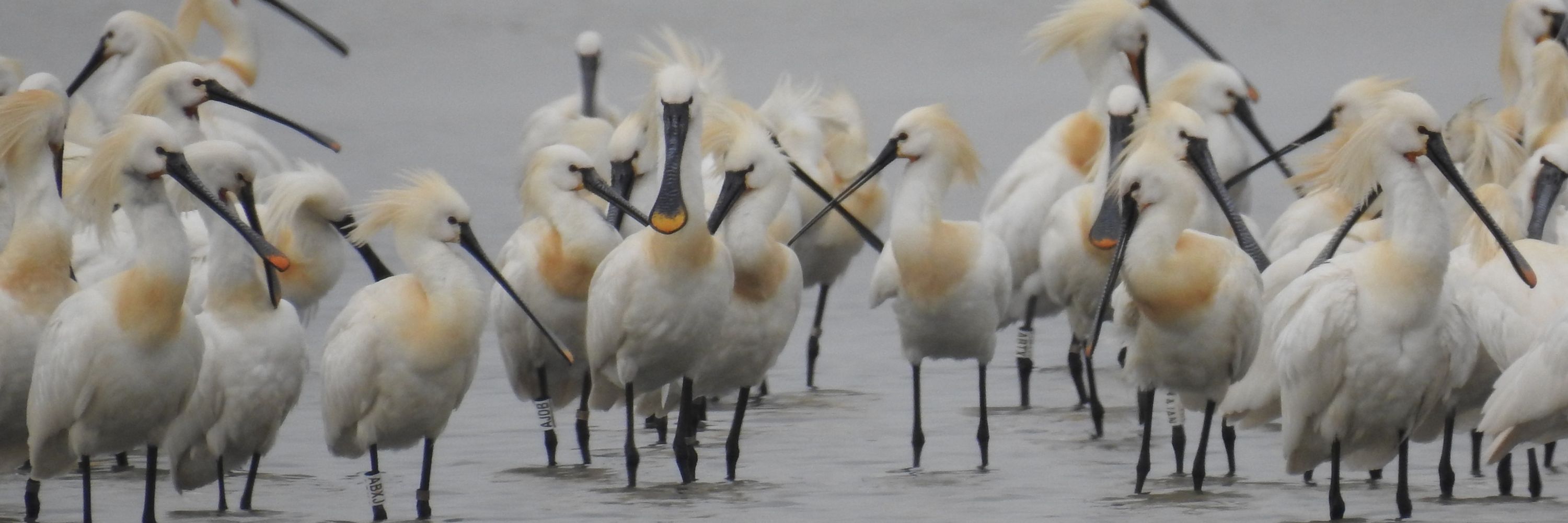
Postdoctoral Research Associate at Global Wader
Network Lead - Youth Engaged in Wetlands
Where is Spoony? - Zooniverse project manager.
@jocelyn-tdv.bsky.social Thomas Blanchon @tamarlok.bsky.social and @joseaalves.bsky.social for the advice! Also, technicians and field volunteers at @tourduvalat.bsky.social eco_flyway @globalflyway.bsky.social CESAM, and @uaveiro.bsky.social
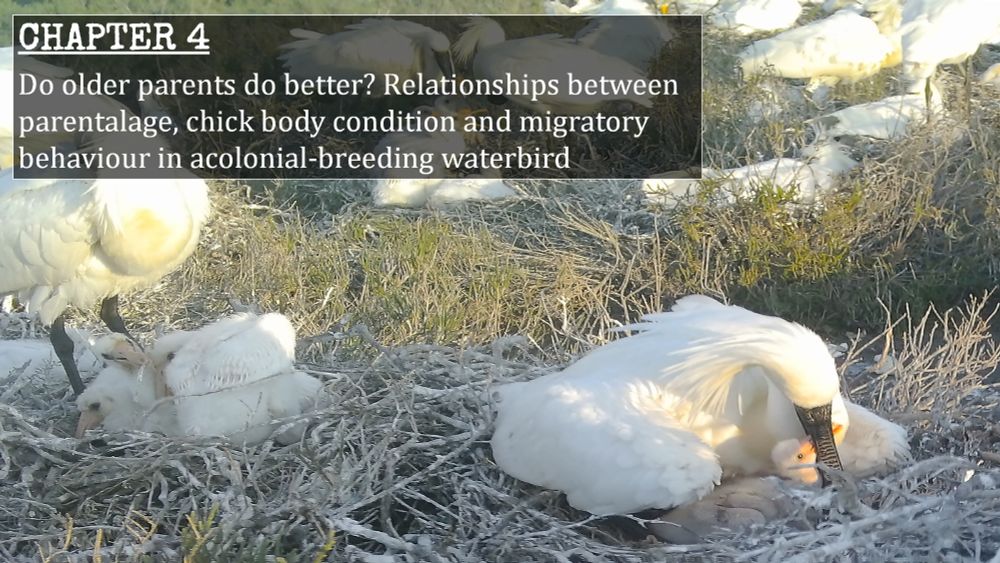
@jocelyn-tdv.bsky.social Thomas Blanchon @tamarlok.bsky.social and @joseaalves.bsky.social for the advice! Also, technicians and field volunteers at @tourduvalat.bsky.social eco_flyway @globalflyway.bsky.social CESAM, and @uaveiro.bsky.social
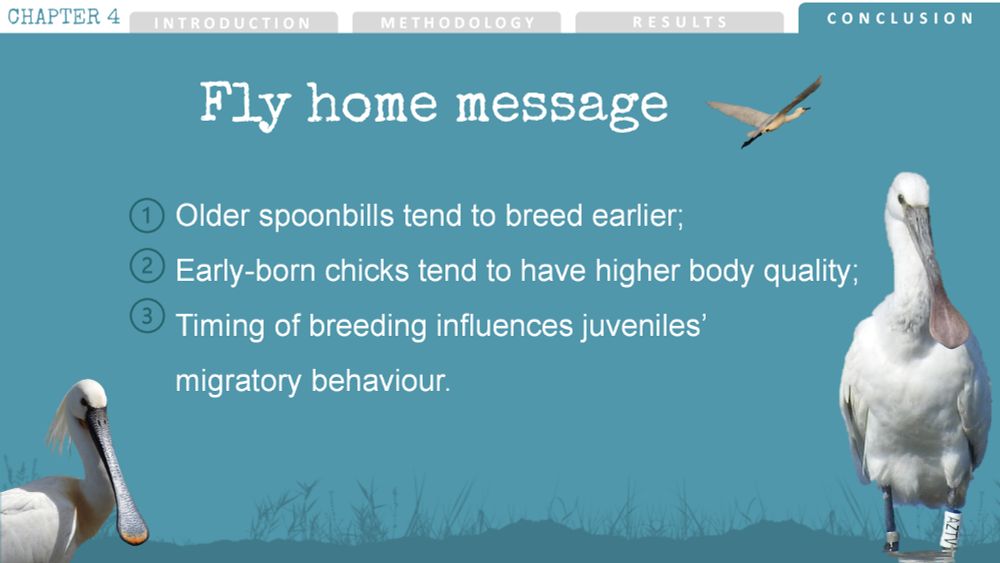
We examined chick migratory behaviour based on crossing major barriers:
🟡 No barriers
🟢 Sahara Desert
🔵 Mediterranean Sea
Intriguingly, as the season progresses, the chance of spoonbills crossing major ecological barriers decreases. (6/8)
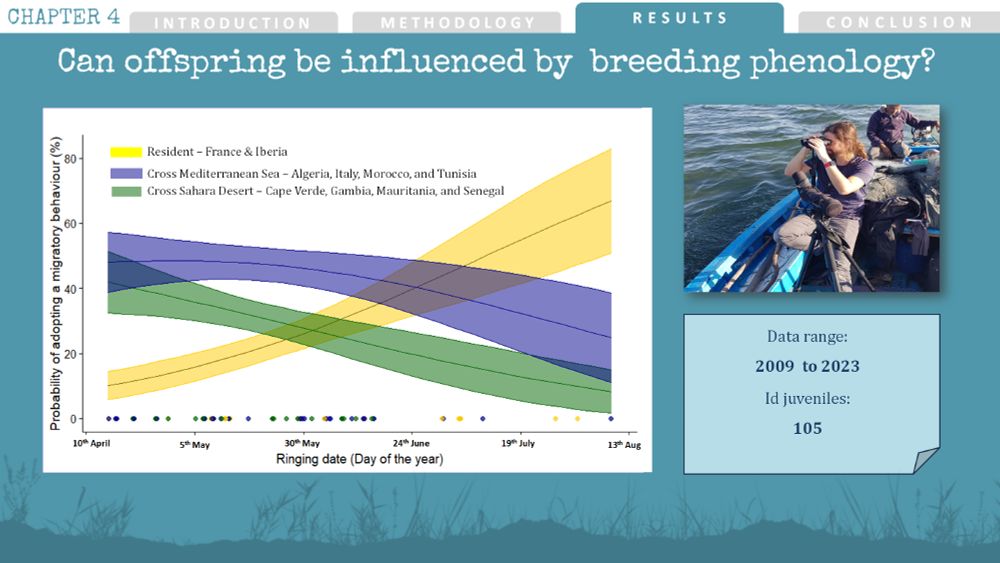
We examined chick migratory behaviour based on crossing major barriers:
🟡 No barriers
🟢 Sahara Desert
🔵 Mediterranean Sea
Intriguingly, as the season progresses, the chance of spoonbills crossing major ecological barriers decreases. (6/8)
Thus, by breeding earlier, older spoonbills have higher likelihood of having chicks with higher body condition. (5/8)
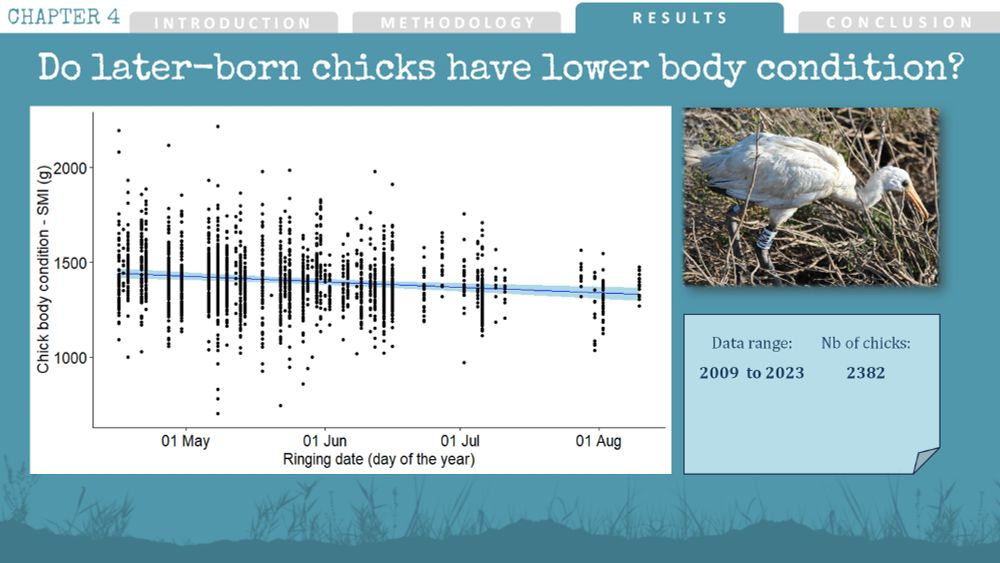
Thus, by breeding earlier, older spoonbills have higher likelihood of having chicks with higher body condition. (5/8)
Our finding: Older spoonbills tend to breed earlier in the season than younger ones.
But how can this impact their offspring? (4/8)
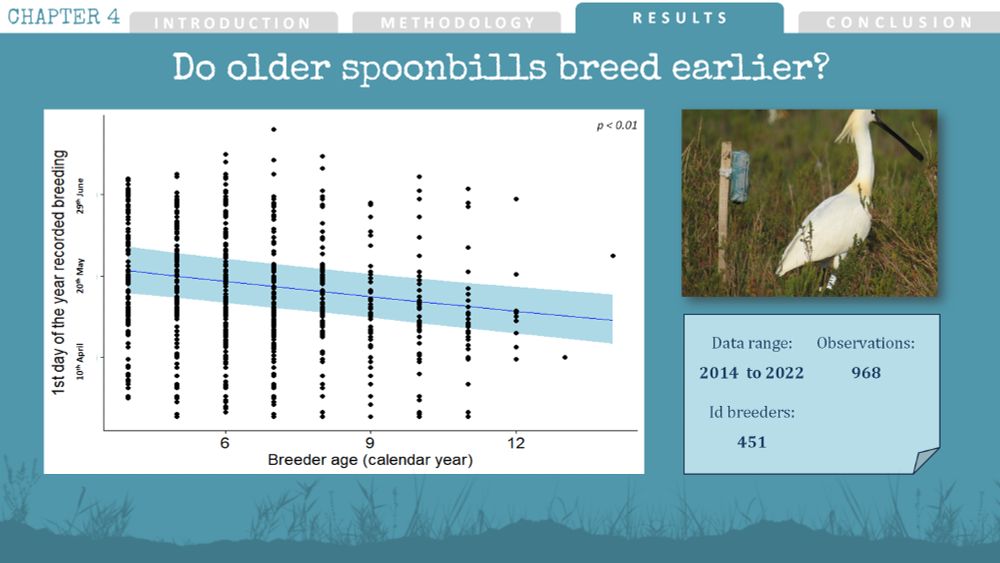
Our finding: Older spoonbills tend to breed earlier in the season than younger ones.
But how can this impact their offspring? (4/8)
Thanks, to these individual markings we were able to determine the age of 451 breeders and the migratory behaviour of 105 juveniles. (3/8)

Thanks, to these individual markings we were able to determine the age of 451 breeders and the migratory behaviour of 105 juveniles. (3/8)
However, due to the difficulty to follow animals it is often difficult to assess how their performance impacts their offspring. (2/8)
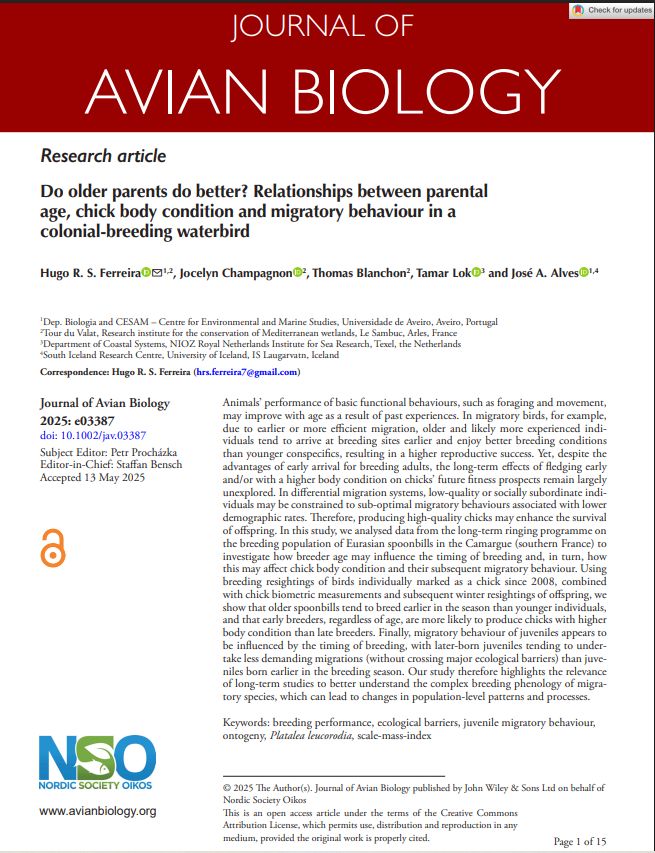
However, due to the difficulty to follow animals it is often difficult to assess how their performance impacts their offspring. (2/8)

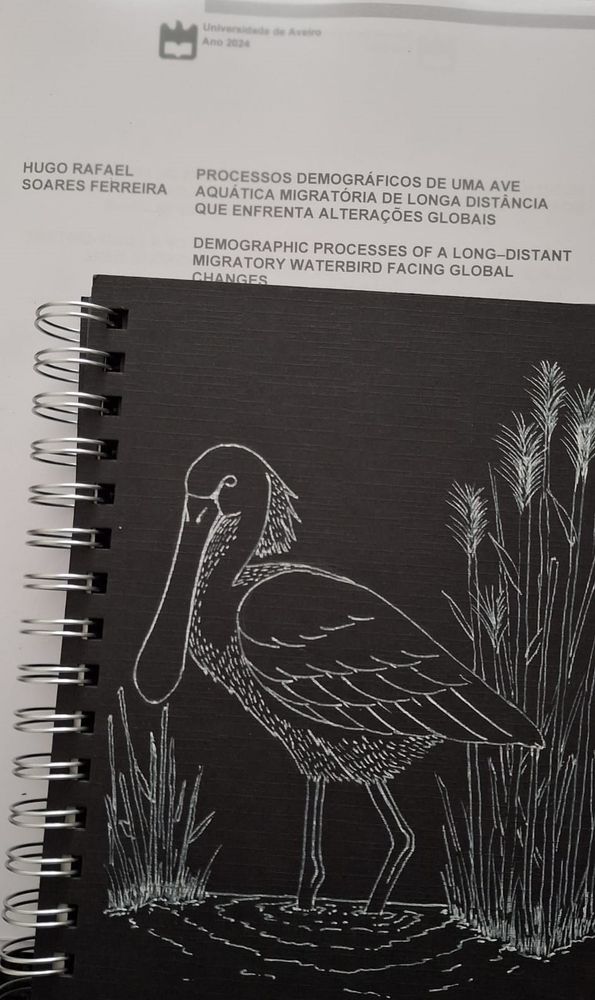
Carolina Hadden, @jocelyn-tdv.bsky.social , Tamar Lok, Marion Vittecoq, and José A. Alves for the advice and tremendous help!
Also, Sandra Hodic (fieldwork), the @tourduvalat.bsky.social, eco_flyway, CESAM, and @uaveiro.bsky.social ).
.
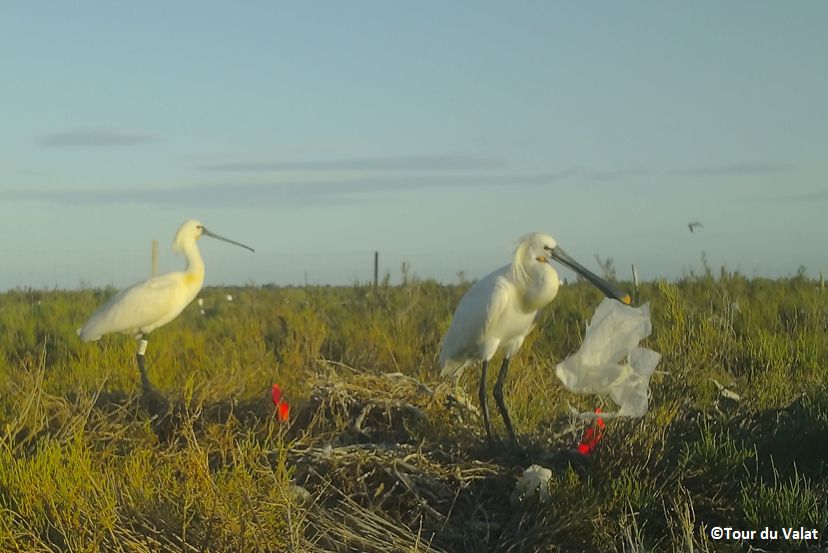
Carolina Hadden, @jocelyn-tdv.bsky.social , Tamar Lok, Marion Vittecoq, and José A. Alves for the advice and tremendous help!
Also, Sandra Hodic (fieldwork), the @tourduvalat.bsky.social, eco_flyway, CESAM, and @uaveiro.bsky.social ).
.
Studies such as necropsy or detailed nest temperature analysis could help unravel the benefits and potential adverse effects of ANM on waterbird breeding success. 9/10
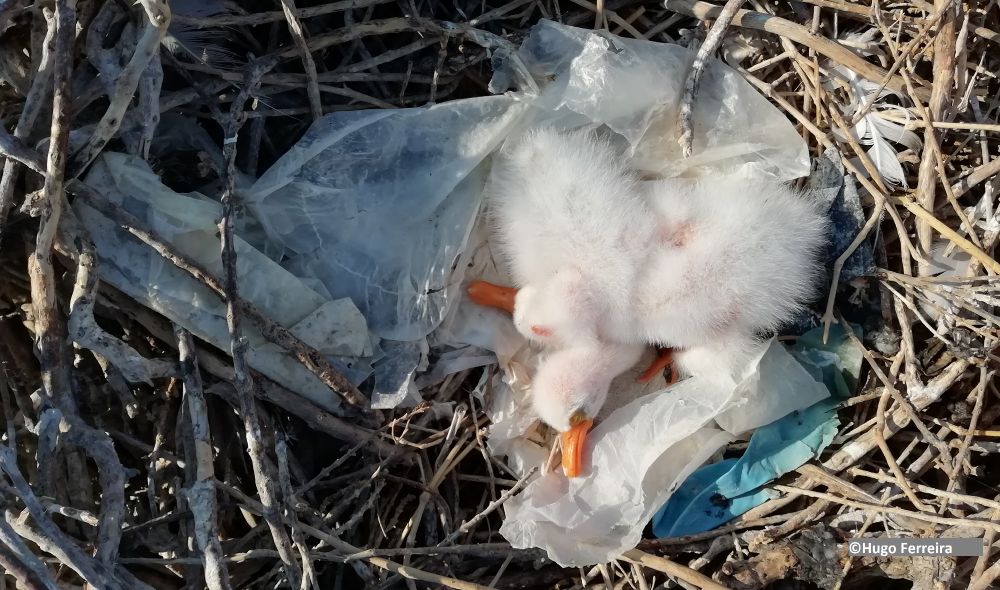
Studies such as necropsy or detailed nest temperature analysis could help unravel the benefits and potential adverse effects of ANM on waterbird breeding success. 9/10
However, spoonbills could act as #biovectors, potentially transporting materials like sheet plastics from agricultural fields to natural nesting areas. (8/10)
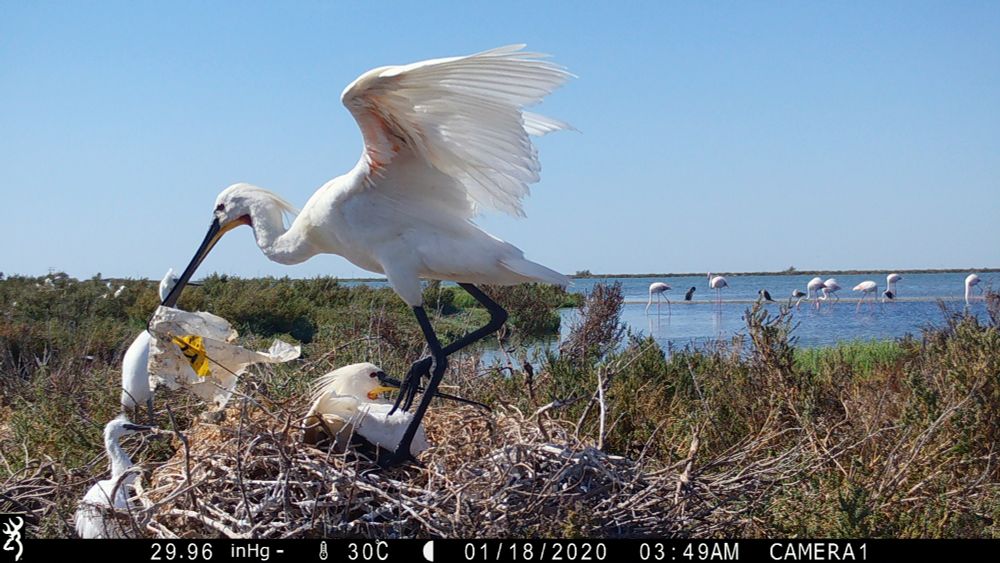
However, spoonbills could act as #biovectors, potentially transporting materials like sheet plastics from agricultural fields to natural nesting areas. (8/10)
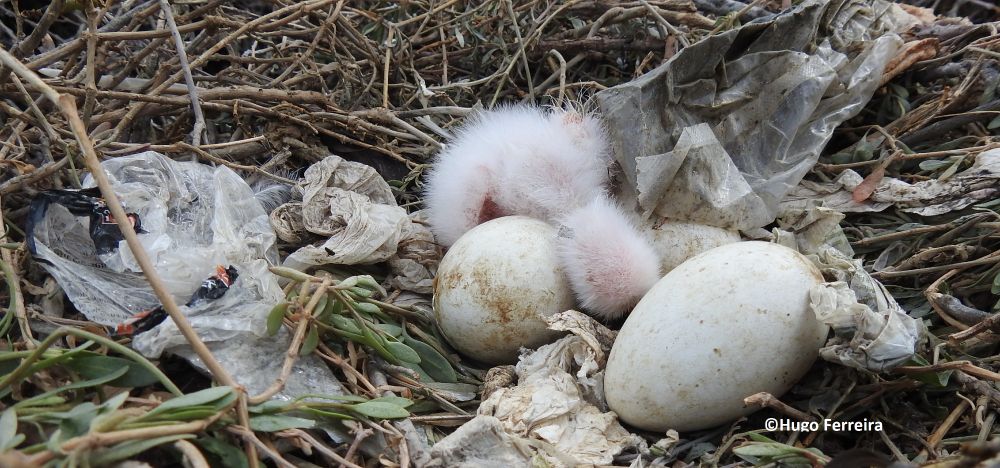
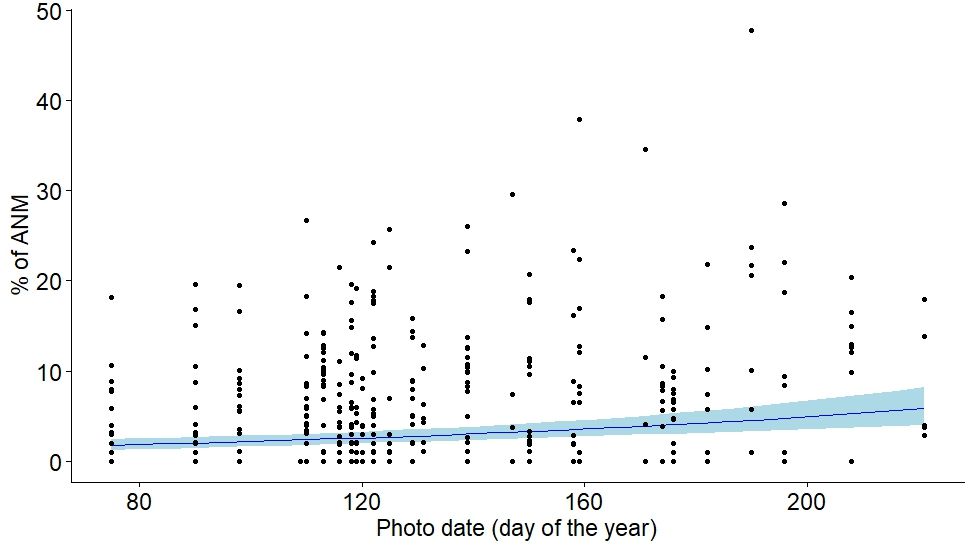
Raw data suggests Halimione decreases ~21 days post estimated egg laying, while ANM remains constant. (5/10)

Raw data suggests Halimione decreases ~21 days post estimated egg laying, while ANM remains constant. (5/10)
Nests were photographed during each visit (2.3).
Marked breeders were identified and linked to nests (2.5), and hatching success was recorded (2.6). (4/10)
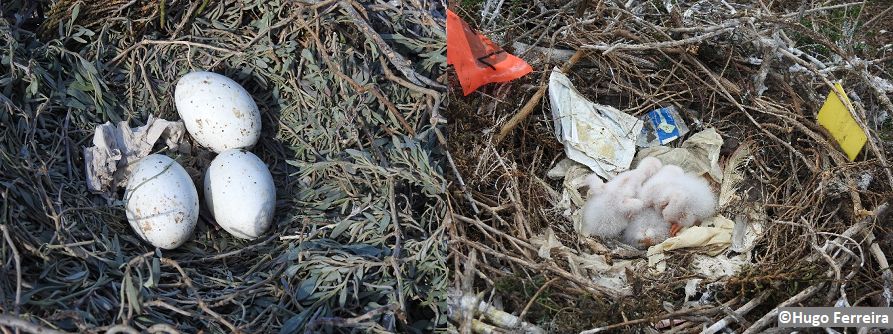
Nests were photographed during each visit (2.3).
Marked breeders were identified and linked to nests (2.5), and hatching success was recorded (2.6). (4/10)
ANM were mainly located in the nest lining and on average represented 1.4 ± 0.87% of the nest total mass. (3/10)
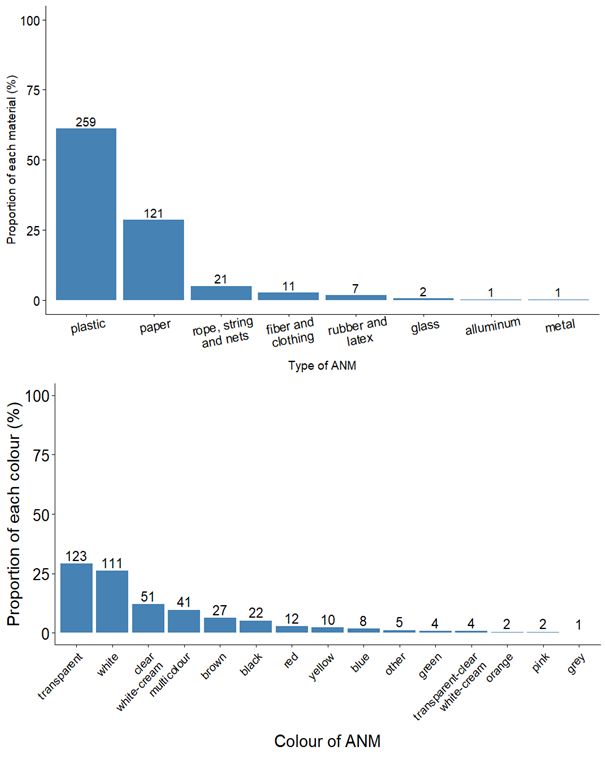
ANM were mainly located in the nest lining and on average represented 1.4 ± 0.87% of the nest total mass. (3/10)
We monitored ANM occurrence in nests in the #Camargue wetland, Southern France, over two breeding seasons. (2/10)
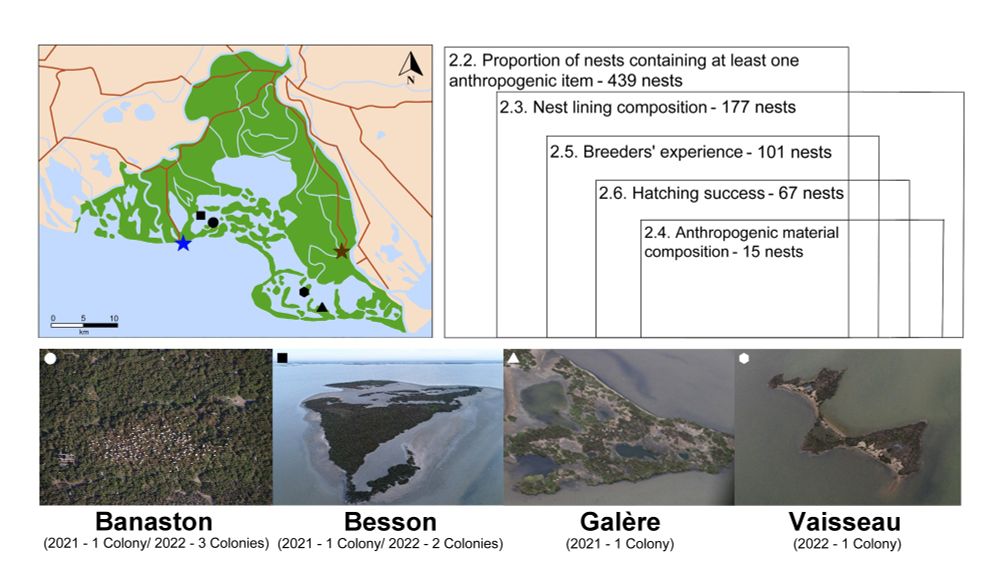
We monitored ANM occurrence in nests in the #Camargue wetland, Southern France, over two breeding seasons. (2/10)
Third chapter of my thesis out in #stoten @elsevierconnect.bsky.social
"Presence and potential impact of anthropogenic nesting materials on a colonial breeding waterbird"
www.sciencedirect.com/science/arti... (1/10)
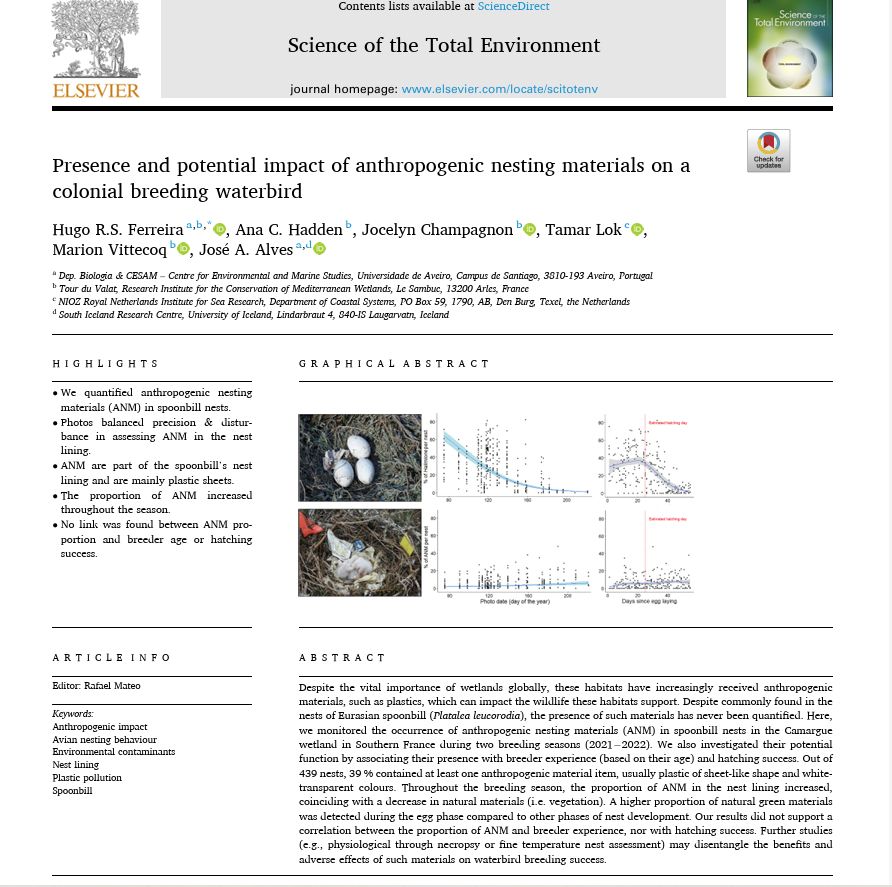
Third chapter of my thesis out in #stoten @elsevierconnect.bsky.social
"Presence and potential impact of anthropogenic nesting materials on a colonial breeding waterbird"
www.sciencedirect.com/science/arti... (1/10)
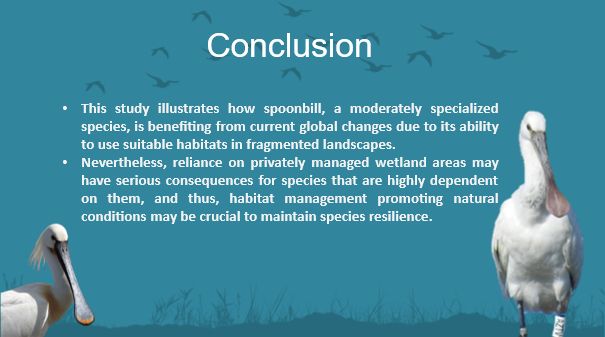
This reserve was identified as one of the most important areas. (7/8)
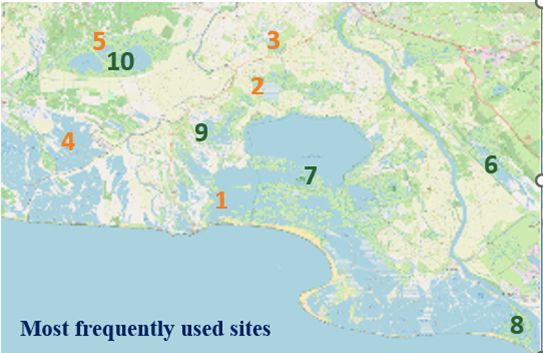
This reserve was identified as one of the most important areas. (7/8)
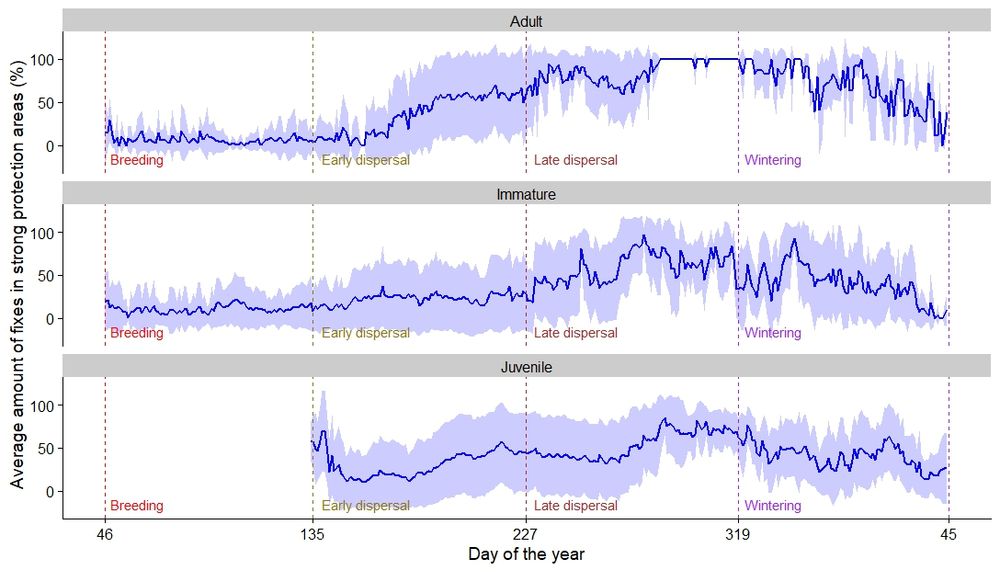
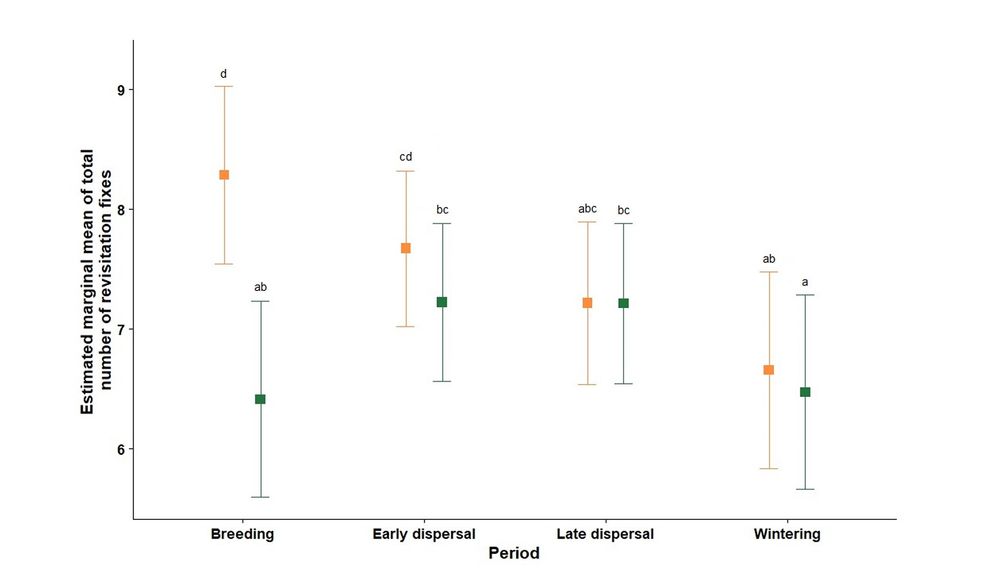

Thus, we divided Camargue into areas of moderate (orange) or strong protection (green) (3/8)

Thus, we divided Camargue into areas of moderate (orange) or strong protection (green) (3/8)
"Role of protected areas for a colonial-breeding waterbird in a fragmented landscape throughout its annual cycle"
This study focused on the Eurasian spoonbill land-use of #Camargue
link.springer.com/article/10.1... (1/8)

"Role of protected areas for a colonial-breeding waterbird in a fragmented landscape throughout its annual cycle"
This study focused on the Eurasian spoonbill land-use of #Camargue
link.springer.com/article/10.1... (1/8)

